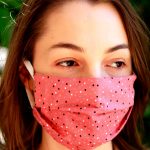Post Traumatic Stress Disorder (PTSD)
Through no fault of their own, many people suffer greatly on a daily basis from events that have recently happened or have happened in the distant past leaving them feeling restricted as a result of their symptoms.
Consider the following statistics:
- Canada has one of the highest incidences of PTSD in 24 countries studied.
- 9.2% of Canadians or 9 in 100 people will suffer from PTSD in their lifetime
- Anyone can develop PTSD at any age
- PTSD can develop even if never having directly experienced trauma
- Females are more likely to experience PTSD
- Not everyone who experiences a traumatic event will develop PTSD
- The symptoms can be as unique as the individual
- Sexual Assault is more likely to trigger PTSD than most other traumas
- PTSD symptoms don’t always appear right away
- Vicarious trauma (or emotional residue) can be transferred from one person to another such as a parent to a child or from a client to a trauma worker or first responder
- Those experiencing social, economic, educational disadvantage or racism are more likely to suffer
- PTSD is linked to an experience or event that violates your expectations
- If you live in a part of the world that is considered safe and something happens, it might be harder for you to recover
– The PTSD Association of Canada
What are the signs of post traumatic stress disorder?
For Adults and Teens:
- Re-experiencing: This is the most common symptom.
- It often takes the form of flashbacks, nightmares, repetitive and distressing images or sensations, sweating, pain, nausea and trembling.
- Avoidance: Avoiding certain people and places that remind the person of the experience.
- Distraction: Many people avoid talking about the trauma – and may distract themselves with work or hobbies.
- Numbness: Some people attempt to numb their emotions completely, which can lead to them becoming isolated and withdrawn.
- Hyper-arousal: Leading to angry outbursts, irritability, insomnia and a lack of concentration.
- Other mental health problems: Including depression, anxiety or phobias.
- Self-harming or drug/alcohol misuse.
- Physical symptoms: Headaches, dizziness, chest pains and tummy aches.
For Children:
- Avoidance of places, people, and activities that are reminders of the trauma
- Bed wetting
- Difficulty concentrating
- Easily irritated and angered
- Emotional numbness
- Feeling jumpy
- Increased arousal such as difficulty sleeping
- Physical symptoms: Headaches, dizziness, chest pains and tummy aches.
- Re-enacting traumatic events through play
- Re-experiencing the trauma through intrusive distressing recollections of the event, flashbacks, and nightmares; and
- Separation anxiety
See below for additional reading on this subject and the related stressors accompanying this disorder:













